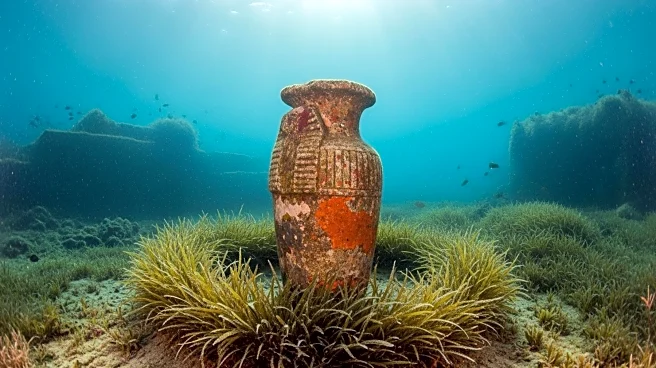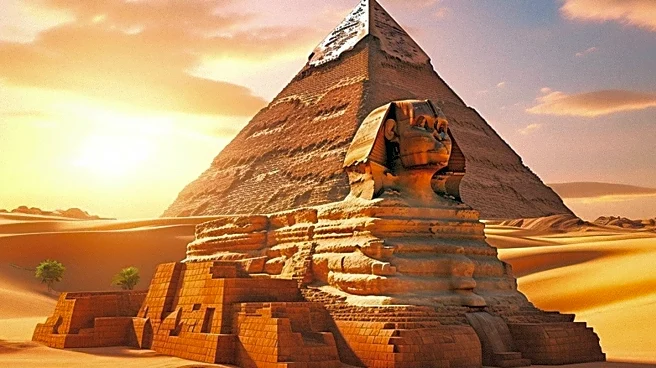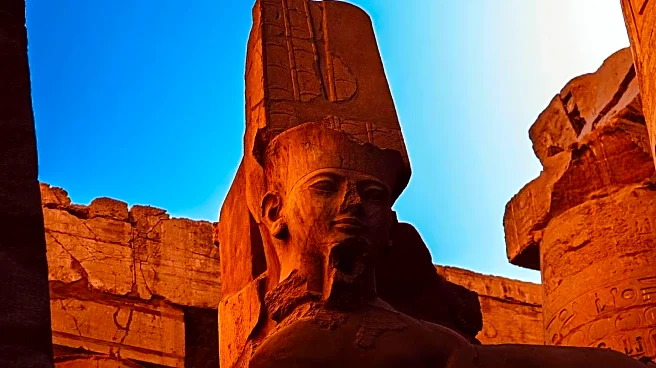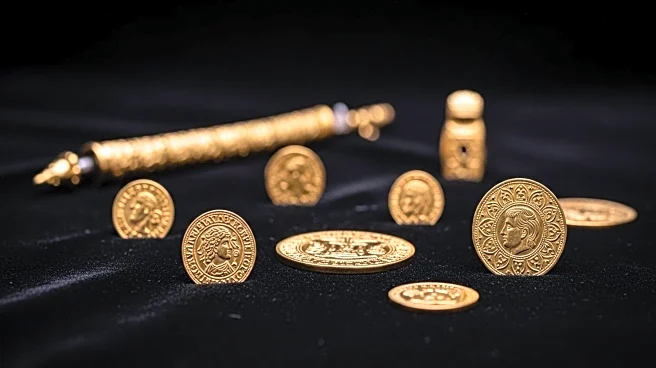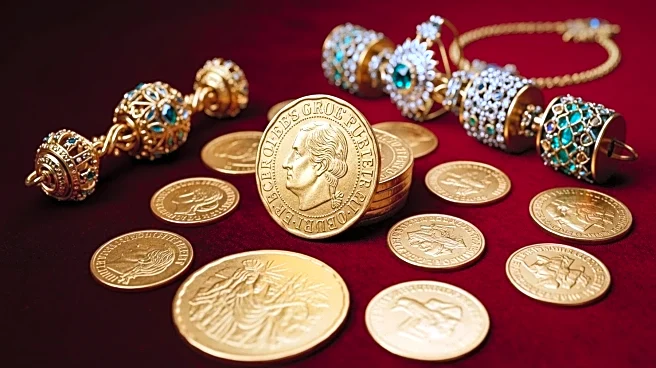What's Happening?
A team of underwater archaeologists has discovered a sunken port off the coast of Egypt, which may provide insights into the location of Cleopatra's lost tomb. The port, found near the ancient temple of Taposiris Magna, includes towering structures, polished stone floors, and artifacts dating back to Cleopatra's era. This discovery is part of a broader effort led by Kathleen Martínez, who believes the temple is key to finding Cleopatra's burial site. The findings were announced by the Egyptian Ministry of Tourism and Antiquities and have been featured in a National Geographic documentary. The discovery is significant as it adds to the understanding of ancient Egyptian maritime activities and could potentially lead to one of the most significant archaeological finds of the century.
Why It's Important?
The discovery of the sunken port is crucial for Egyptian archaeology, offering potential insights into the life and death of Cleopatra, one of history's most enigmatic figures. If Cleopatra's tomb is found, it could provide invaluable information about her reign, her relationship with the Roman Empire, and her cultural impact. The find also underscores Egypt's historical role as a hub of commerce and culture, with its coasts serving as strategic points of interaction with the ancient world. The ongoing research and excavation efforts highlight the importance of preserving and studying historical sites, which can offer new perspectives on ancient civilizations.
What's Next?
The archaeological team plans to continue their excavation efforts at the temple and the underwater site. They aim to gather more samples and artifacts to better understand the port's significance and its connection to Cleopatra. The Egyptian Ministry of Tourism and Antiquities has expressed support for these efforts, recognizing the potential impact of such discoveries on both historical scholarship and tourism. As the search for Cleopatra's tomb continues, the findings could reshape historical narratives and attract global attention to Egypt's rich archaeological heritage.

